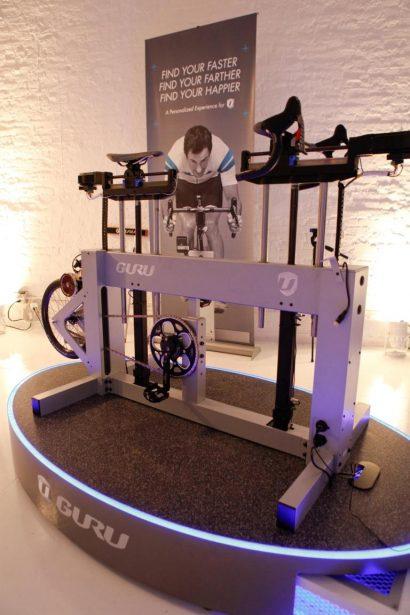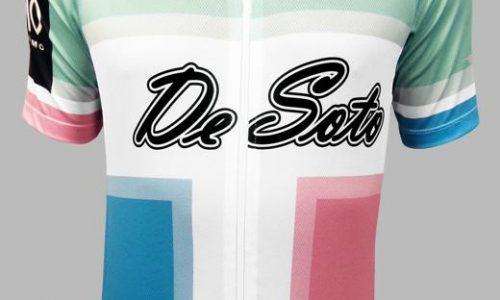GURU EXPERIENCE TOTAL BIKE FIT SYSTEM
Tested: Basic Fit Experience Prices: Determined by retailer Source: GURU approved bike shops This post might contain affiliate links for which we may make a small commission at no extra cost to you should you make a purchase. Learn more. Features: Incremental fit positions Summary: High quality system that fits a bike to the rider, not the rider to the bike | HOT!
| NOT!
|
ARTICLE SUMMARY
The process will go something like this: A F.I.S.T. certified technician will adjust the machine for an initial fit, and then vary the saddle and handlebar positions as you ride. Like an optometrist, the technician will ask, “Do you like position ‘A’ better or ‘B’ better? Is ‘B’ better or ‘C’ better?” The F.I.S.T. technician will monitor the machine’s built-in power meter as well as assessing your pedaling efficiency and comfort, then, will make position changes asking you which is better.
After you have determined which is your most comfortable and efficient fit, the GURU Experience fit system’s computer saves this data and then, if requested, can look up the bikes in its database to give you a list of options that fit your optimized position. Saddle, handlebar and stem lengths are also recommended. All of this data is stored and to be used again anytime the customer wants to fine-tune adjustments or even setup a new bike.
BACKGROUND
An industry leader for bike fitting is the new GURU Experience fit system (http://gurusports.net). Dorel Industries acquired GURU in 2012. Following the acquisition, Dorel created the new GURU Sports division to focus on the GURU Experience fit system.
GURU Cycles continues to manufacture GURU bicycles from their original Montreal headquarters through a license agreement with Dorel Industries.
This has allowed GURU Sports to focus on and continually add to its data base of bicycle models, sizes, geometries and other fitting data. Bill Rudell, Dorel’s Cycling
Sports Group North America Public Relations Manager explains, “The hardware fit system was great, but we wanted the GURU Experience to utilize the best-in-class fit bike with revolutionary software to allow any cyclist to find the perfect bike right off the rack. The GURU Experience also allows current bike owners the opportunity to dial in their fit while maximizing power and comfort, whether you’re a racer, recreational rider, or preparing for a Gran Fondo, the GURU Experience will enhance everyone’s cycling experience.
GURU Sports has a dedicated team of employees who work closely with F.I.S.T (Fit Institute Slow Twitch) to continually update the functionality of the software and data base.” Bill continues, “There are over 1,000 bikes in the database and more are continually being added.”
He concludes, “We have teamed with Fizik for saddles and Zipp for handlebars to provide the person being fit with lots of options. But, if the rider prefers, we can use his/her saddle, or tell the machine which saddle they are using and the software will make minor adjustments accordingly.”
My fitting was done at Bike Religion in Dana Point by GURU fit specialist Giddeon Massie, 2x Olympian and 20x National Track Champion (so you can see, he knows something about riding!). Bill Rudell was also there to answer any questions that came up.
All in all, this was a very positive experience. GURU, Bike Religion and especially Giddeon literally bent over backwards to make the customer feel comfortable, involved, and a large part of the process.
WHAT TO BRING
Bill coordinated this fitting with Bike Religion, and I was scheduled for a fit the following week. I was asked to bring my riding attire (shorts, jersey, socks and shoes) as well as a water bottle and towel.
HOW IT WORKS
GURU fitters are highly trained and highly qualified to address every type of scenario as well as answer and address any of your questions. They are trained to perform a series of fittings (via different settings), and look at power output and efficiency of pedaling of these different fittings, so don’t be afraid to ask them anything about the process.
Prior to my fit, Giddeon asked me a series of questions. “What type of and how much riding will you be doing? Road

racing, triathlons, weekend outings, centuries, club rides, etc.?” Next, he took several measurements including height, inseam and shoulder width. Also, in case it was needed, I brought along my bike.
As he was taking several measurements off my bike, Giddeon asked how I felt when riding. “Any areas of concerns?” “Anywhere you feel uncomfortable or looking to change?” He wrote all of the captured data onto his clipboard. All of this information was then entered into the GURU Experience fit machine.
A flip of the switch and the machine roared to life automatically moving the saddle up and back and the handlebars down to match the data that was input by Giddeon.
I was then asked to put on my shoes and hop onto the machine. I had to pedal for a few minutes to loosen up my legs and lower back. Before the actual fit process begins, it is best to be completely warmed up and loose.
While pedaling, it’s best to settle into a rhythm. Communicate with the fitter and feel free to ask any questions and most importantly, be honest.
THE FITTING PROCESS
I equate the GURU Experience fit process to that of when you get your annual eye exam. For each of my fittings, a baseline measurement was first recorded. Giddeon would then set the machine (saddle and handlebars) to a +1 setting and then a -1 setting.
Through the process, I was asked “which is better, A or B?” After I would choose one, Giddeon would then set the machine to +0.5, then -0.5. I was asked again, “which is better, A or B?” I eventually got to a point where I could not tell the difference anymore.
This is where the experience of the fitter comes in since they are looking at your power output as well as pedaling efficiency for each of these settings. With the GURU Experience fit system, it is easy to quickly cycle back and forth between any settings which allows you to easily tell which setup feels best.
BASELINE – MyFit #1 – My starting point was a mix of (a) what I told Giddeon my goals were (racing), (b) current bike measurements (I’m pretty comfortable on my current bike so my goal is to optimize my positioning), and (c) metrics data from the GURU Experience fit system.
It is important to note that this system can be used for someone brand new to cycling, as well as for an advanced cyclist who just wants to fine tune their position.
Giddeon set the machine so that I was pedaling fairly easy, about 80 watts. This will be important later. As Giddeon watched me cycle, he asked me how this felt. Did I want to raise or lower the bars and/or saddle? I gave my initial comments and we started with the saddle. After several +1, -1 settings, I chose one that felt the best.
Now, onto the bars. Up and down a few times, I chose one that felt best. Next, we did half-increments. I finally settled on one that felt the best. MyFit #1 was then baselined into the machine.
MyFit #2– Giddeon now asked me if I wanted the saddle more forward or rearward, same for the handlebars. We cycled between +1, and -1, then +0.5 and -0.5 increments. Once this was determined, we worked on saddle and

handlebars up and down positioning. After settling in on a position that felt the best we locked it into the system as MyFit #2. All through this process, I was asked how this felt, was A or B better. I just closed my eyes, dropped my head and fed back to Giddeon how each setting felt. He did the rest by watching my power output and pedaling efficiency.
MyFit #3 – For my goals, three iterations was enough, but for those that want more comparisons, 5 iterations and even 10 iterations are available.
Once MyFit #3 was locked in, we started comparing MyFit#1 to MyFit#2 and to MyFit#3.
At this point, MyFit #2 felt the best, but only Giddeon knew better. He now started adding a lot more load to the rear wheel forcing a simulation of real world conditions. I was now pedaling at a power output of 150-200 watts. MyFit #2 wasn’t too comfortable anymore. We switched back and forth several times and decided on MyFit #3. It was surprising to me that there was that much difference once power was added.
OBSERVATIONS
My advice is to put your head down and close your eyes while the fitter changes settings. Concentrate on the ‘feel’ – how each different setting is more comfortable or less comfortable, easier or harder to pedal, less or more efficient than the previous one.
Let the fitter tell you if you are putting out more or less power as well as tell you how your pedaling style/efficiency looks. If you look at the screen, there is a chance you can bias the results. Your job is to concentrate on pedaling and “feeling” which setting is best. The fitter will either agree or disagree, either way; the fitter will help you through a successful process.
SO HOW DID MY FIT COMPARE TO THE SETUP ON MY ROAD BIKE?
Giddeon explained that Dan Empfield of Fit Institute Slow Twitch – F.I.S.T., has determined a max and min value range for each of the settings. My summary results were that my fitting on the GURU Experience fit system ended up on the higher end of this range and that my bike is setup on the lower end of this range.
All values from the GURU Experience fit system and my personal bike are within the acceptable range. Giddeon also said to make changes slowly, adding height a little at a time. Going forward, I will be making small adjustments to come closer to the GURU recommended settings. I will keep my eye on how these measurements derived from a static fit machine equate to the actual road?
CONCLUSION
The underlying principle of the GURU Experience fit system is that it fits a bike to the rider, not the rider to the bike. This system will accommodate a person new to cycling as well as a seasoned racer. In other words, both a new

customer who has no idea of what size, type, shape of bike, saddle, bars; as well as someone who has raced the last 20 years, will leave the fitting knowing that their position is as efficient and comfortable as they can get.
GURU is still building their dealer network so if you don’t see a GURU Experience fit system at your local dealer, contact GURU to see when and where there will be one. They are building 50-75 new systems a year, so there should be one at your local dealer soon.
Was it worth it? A most definite YES!
——————————————————————————-
EXPERIENCES AVAILABLE:
BASIC GURU EXPERIENCE will give you the best riding position for a new bike or, to optimize your riding position on an existing bike. Features include;
- Integrated F.I.S.T. protocol – Road fit.
- Fizik Spine Concept test / Flexibility assessment.
- Fizik and Zipp equipment selection.
- Real-time (incremental) position changes.
- Saddle positioning.
- Handle bar reach and stack positioning.
- Streaming integrated video to track riding position changes.
- Baseline power and cadence analysis to track efficiency.
- Up to 5 Position Captures including customer’s existing bike for comparison during bike fit.
- Summary sheet with exact fit coordinates to modify new or existing bike.
- Final Fit Printout emailed to you and Data Storage.
- Recommendations of bikes and/or components most appropriate to your most efficient setting.
- As of 6/2013, this runs about $150*
PREMIUM GURU EXPERIENCE (ROAD or TRIATHLON / TT) includes all features of the BASIC GURU EXPERIENCE fit plus;
- On the fly equipment selection change to compare different handlebars & saddles.
- ‘Motion capture’ video and in-depth body angle analysis.
- Up to 10 Position Captures including customer’s existing bike for comparison during bike fit.
- Video screen shot of position in report.
- Spin Scan module provides comprehensive power analysis (i.e., pedal scan).
- Discussion and comparison of Fizik saddles and Zipp handlebars to select optimal components.
- Retro fit for existing bike.
- Triathlon/time trial-specific fit module.
- 30-day post-session adjustment period to further modify position.
- As of 6/2013, this runs about $300*
*Prices listed are advertised pricing from Bike Religion, other bicycle shops pricing and services may vary.
*Most bike shops will apply all or part of these fees towards the purchase of a new bicycle.

I have always enjoyed bicycling and, through a series of coincidences, became a Bicycle Industry Consultant and Product Tester. I test prototype products for companies and have published only off the shelf production products on biketestreviews.com.


